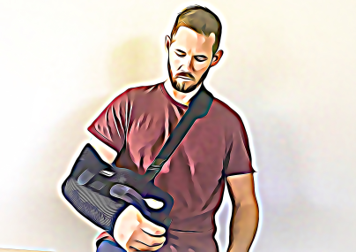
Shoulder Dislocations
The shoulder is a fascinating joint with incredible flexibility. It is connected to the body via a complex system of muscles and ligaments. Most of the other joints in the body are very stable, thanks to the structure of the bones and ligaments surrounding them. However, the shoulder has so much movement and flexibility that stability is reduced to allow for this. Unfortunately, this increased flexibility means that the shoulder is more vulnerable to joint dislocations.
What is a dislocation and how does it happen?
As the name suggests, a dislocated shoulder is where the head of the upper arm moves out of its normal anatomical position to sit outside of the shoulder socket joint.
Some people have more flexible Joints than others and will, unfortunately, have joints that move out of position without much force. Other people might never dislocate their shoulders unless they experience a traumatic injury that forces it out of place. The shoulder can dislocate in many different directions, the most common being anterior or forwards. This usually occurs when the arm is raised and forced backward in a ‘stop sign’ position.
What to do if this happens
The first time a shoulder dislocates is usually the most serious. If the shoulder doesn’t just go back in by itself (spontaneous relocation), then someone will need to help to put it back in. This needs to be done by a professional as they must be able to assess what type of dislocation has occurred, and often an X-ray needs to be taken before the relocation happens.
A small fracture can actually occur as the shoulder is being put into place, which is why it is so important to have a professional perform the procedure with X-Ray guidance if necessary.
How can physiotherapy help?
Following a dislocation, your physiotherapist can advise on how to allow the best healing for the shoulder. It is essential to keep the shoulder protected for a period to allow any damaged structures to heal as well as they can.
After this, a muscle-strengthening and stabilization program can begin. This is aimed at helping the muscles around the shoulder to provide further stability and prevent future dislocations.
The information in this article is not a replacement for proper medical advice. Always see a medical professional for an assessment of your condition.
Physio Direct is ACC accredited so you can come to us directly to get an injury registered with ACC without having to go to your GP first, followed by an assessment, treatment and follow up review, to ensure correct care and recovery. Physio Direct can also refer you directly for Cortisone injections, X-Rays and Ultra Sound Scans and on to Specialists if needed.
Please feel free to print out these news letters and put the in the staffroom and hand them out to your team. Understanding more about injuries, gives people the power to prevent an injury from occurring in the first place. Prevention and education is the key!
